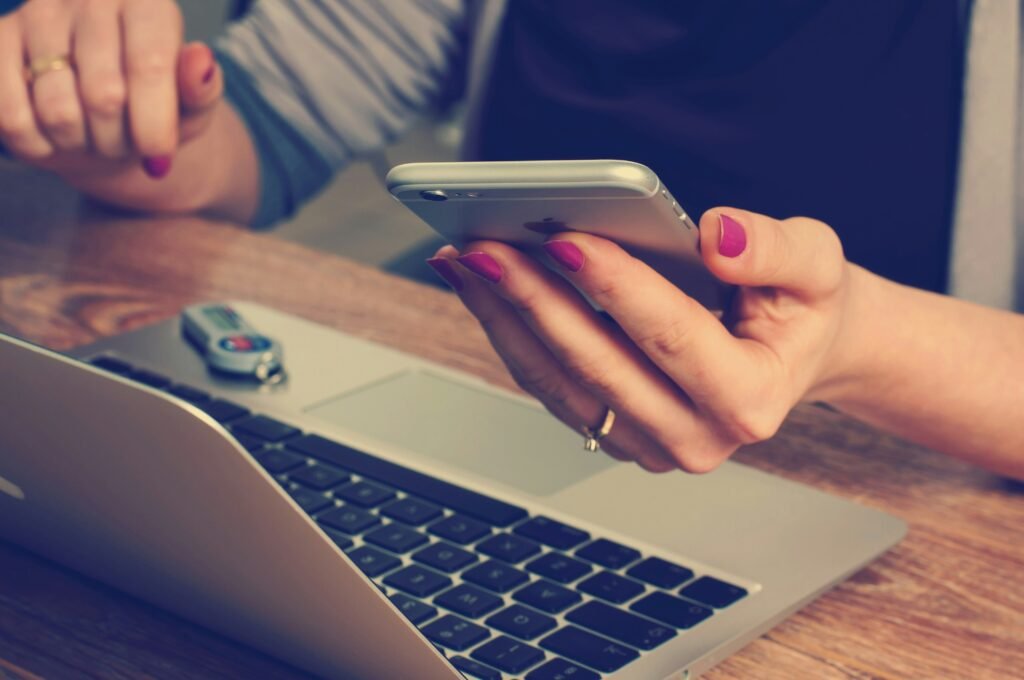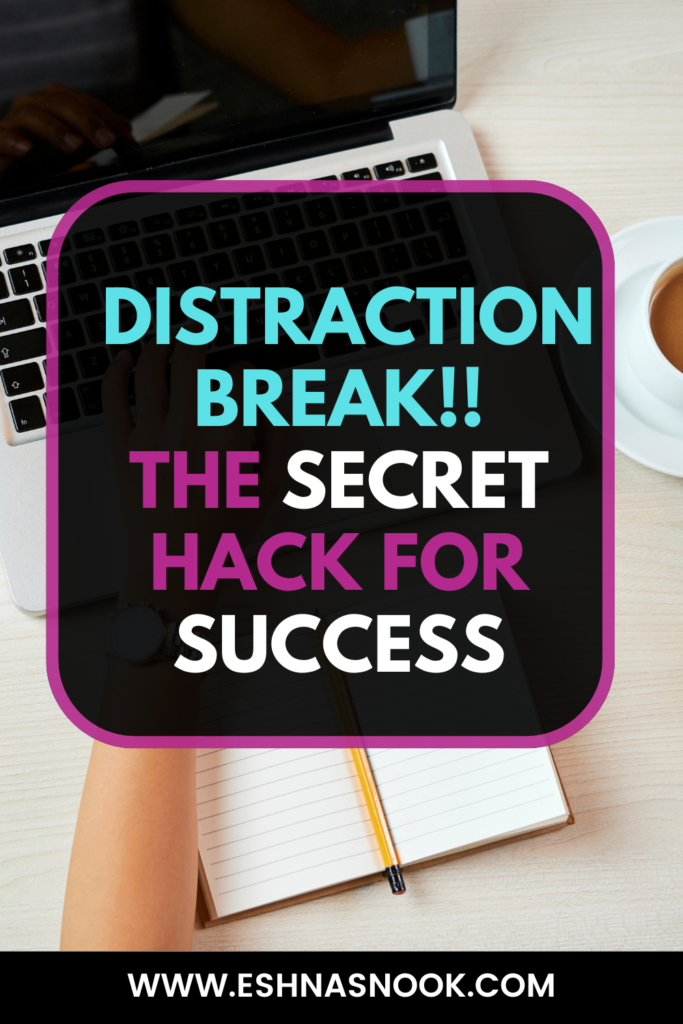Take a Distraction Break : Secret Hack For Success
In today’s fast-paced world, the idea of scheduling distraction time might seem counterintuitive.
After all, we’re constantly bombarded with advice on how to minimize distractions and stay focused.
However, research suggests that allowing ourselves a little distraction can actually boost productivity and creativity.
Let’s explore the benefits of scheduling distraction time and how it can enhance your work and creativity.
Understanding Distraction Time: What Is It and Why Does It Matter?
Distraction time, also known as planned breaks or scheduled downtime, involves intentionally setting aside moments throughout your day to step away from work and indulge in activities that rejuvenate your mind.
Contrary to common belief, these breaks are strategic pauses designed to improve focus and efficiency.
The Power of Distraction:
At first glance, distractions might seem like productivity killers.
However, they can also serve as opportunities for our brains to recharge and make unexpected connections.
When we allow ourselves to be distracted for short periods, we give our brains a break from intense focus and allow them to wander and explore new ideas.
The Myth of Multitasking:
Our brains are wired for focused attention, not multitasking.
Studies by researchers like Gloria Mark have shown that juggling multiple tasks at once actually reduces our efficiency and leads to more errors.
Studies by researchers like Gloria Mark have shown that juggling multiple tasks at once actually reduces our efficiency la more errors.
When we constantly switch between tasks, we incur something known as “attention residue.”.
This residue makes it harder to fully focus on the new task at hand, impacting our performance.
The Power of the Psychological Break:
Taking short breaks throughout the workday can actually enhance focus and concentration.
Studies have shown that short bursts of physical activity, even simply looking away from your screen for a few minutes, can improve cognitive function.
These breaks allow your brain to rest and recharge, preventing mental fatigue and boosting your ability to return to your task with renewed focus.
RELATED: TIPS TO OVERCOME LAZINESS AND PROCRASTINATION

Embracing the Power of Distraction:
Scheduled distractions can be even more powerful than planned breaks.
By allowing yourself dedicated time to indulge in activities you find distracting, like checking social media or reading a news article, you can create a sense of permission and reduce the urge to succumb to these distractions throughout the day.
Think of it like this:
If you tell yourself you “can’t” check social media, the temptation becomes even stronger.
But by scheduling a specific time to do so, you remove the guilt and the constant internal battle.
This frees up your mental space to focus on the task at hand, knowing you’ll have your dedicated “distraction time” later.
For example, a writer working on a challenging chapter might schedule a 15-minute distraction break in the afternoon.
During this time, they could scroll through their favorite social media platform, listen to a few upbeat songs, or grab a cup of coffee and chat with a friend.
By allowing themselves these short breaks, they can return to their writing with a clearer mind and renewed focus.
Benefits of Scheduling Distraction Time:
Improved Focus:
Knowing you have dedicated time for distractions can help you stay present and focused during your work time.
You’ll be less likely to mindlessly wander onto social media and get lost in the internet while you’re supposed to be writing that proposal.
Enhanced Creativity:
Distractions can spark new ideas and connections.
Stepping away from a problem and engaging in activities unrelated to your work can allow your subconscious mind to work its magic.
You might return to your task with a fresh perspective and a burst of creative energy.
A graphic designer struggling to come up with a logo concept might find inspiration by browsing through online art galleries or taking a walk in nature during their scheduled distraction time.
Reduced Stress and Anxiety:
The constant feeling of needing to stay focused can be mentally draining.
Scheduling distraction time allows you to release built-up tension and return to your work feeling refreshed and energized.
Imagine a programmer who has been coding for hours.
During their scheduled distraction break, they could do some light stretches, listen to calming music, or chat with a friend about something completely unrelated to work.
This mental break can help them return to their coding with a clearer head and less stress.
Increased Productivity:
Ironically, allowing yourself to be “distracted” can actually lead to greater productivity in the long run.
Taking planned breaks and engaging in activities you find enjoyable can prevent burnout and help you maintain your focus throughout the workday.
A student studying for exams might find that incorporating short distraction breaks every hour, where they can listen to a few minutes of their favorite music or talk to a friend, helps them stay focused and retain information better over the long study session.
REALTED: HOW TO SET PERSONAL GOALS TO SUCCEED

How to Schedule Distraction Time:
Identify Your Peak Productivity Hours:
When are you naturally most focused and energized?
Schedule your most demanding tasks for these times.
For example, if you’re a morning person who finds your concentration sharpest in the early hours, schedule your most important writing or analysis tasks for this time block.
Plan Short Breaks:
Schedule short breaks (5-10 minutes) every 60-90 minutes throughout your workday.
Get up, move around, do some stretches, or simply look away from your screen and let your mind wander.
These mini-breaks can help prevent mental fatigue and keep you focused throughout the day.
Designate Distraction Time:
Block out a specific time slot in your day, ideally after you’ve completed a focused work session, for indulging in distractions.
This could be 15-30 minutes, depending on your needs and preferences.
Consider placing this block after a particularly challenging task or before tackling a new project.
Stick to the Rules:
Once you’ve scheduled your distraction time, stick to it!
Don’t let yourself get sucked into distractions outside of your designated slot.
If you find yourself reaching for your phone during work time, remind yourself that you have dedicated “distraction time” coming up soon.
RELATED: DESTRESS YOUR DESK
Making Distraction Time Work for You:
Choose Activities You Enjoy:
Distraction time is for indulging in things you find fun and relaxing.
This could be browsing social media, reading a chapter of a book, listening to music, or calling a friend.
The key is to choose activities that genuinely distract you and allow you to disconnect from your work.
Go Analog:
Consider using your distraction time to disconnect from the digital world.
Engage in activities that don’t involve screens, like taking a walk, doing some light stretches, or doodling in a notebook. This can be a refreshing change of pace and help you return to your work feeling more centered.
Experiment and Find What Works:
The key is to find a schedule and activities that work for you.
Experiment with different approaches
and see how your productivity and focus improve.
Maybe you find that short, frequent distraction breaks work best for you, while your colleague thrives with longer, less frequent breaks.
There’s no one-size-fits-all approach.
Remember:
Scheduling distraction time is not about becoming less productive. It’s about working smarter, not harder.
By strategically incorporating breaks and embracing distractions in a controlled way, you can unlock a new level of focus, creativity, and overall well-being.
So, the next time you feel the urge to check your social media feed while you’re supposed to be working on a report, resist the temptation!
Remind yourself that you have dedicated distraction time coming up, and use that knowledge to stay focused on the task at hand.
By embracing this counterintuitive approach, you might be surprised at how much more you can accomplish.
RELATED: TIPS TO DESIGN YOUR IDEAL HOME OFFICE

Addressing Concerns About Distraction Time
Myth: Taking breaks will make me less productive.
Reality: On the contrary, scheduled breaks have been proven to enhance productivity by preventing burnout and maintaining sustained focus.
Myth: I don’t have time for breaks.
Reality: Incorporating distraction time into your routine doesn’t have to be time-consuming. Even brief intervals of rest can yield significant benefits for your overall performance and well-being.
Myth: I’ll lose my train of thought if I take a break.
Reality: Strategic breaks actually help preserve cognitive function by allowing your brain to consolidate information and process complex tasks more effectively.
Remember, it’s not about avoiding distractions altogether; it’s about managing them effectively to fuel your success.
So, why wait?
Start scheduling your distraction time today and embark on a journey towards peak performance and well-being.
FAQs (Frequently Asked Questions)
How long should each distraction break be?
Ideally, distraction breaks should range from 5 to 15 minutes, depending on personal preference and the nature of the task at hand.
Is it better to take short breaks throughout the day or one long break?
It’s generally more effective to take short, frequent breaks throughout the day rather than one long break. This approach helps maintain consistent focus and prevents mental fatigue.
Can distraction time be scheduled during peak productivity hours?
Absolutely! In fact, scheduling distraction time during peak productivity hours can help prevent burnout and maintain sustained focus throughout the day.
What are some effective distraction activities to incorporate into my routine?
Effective distraction activities include taking a short walk, practicing deep breathing exercises, listening to music, or engaging in a brief mindfulness meditation session.
How can I ensure that distraction time doesn’t negatively impact my workflow?
By setting clear boundaries, prioritizing tasks, and embracing variety in break activities, you can ensure that distraction time enhances rather than disrupts your workflow.
Are there any tools or techniques to help me stay accountable to my distraction schedule?
There are numerous productivity apps and techniques available to help you stay accountable to your distraction schedule, such as time-blocking, the Pomodoro Technique, or using dedicated distraction-tracking apps.



The power of distraction…this was such an interesting and informative read! I see why this works. Thanks for sharing!
Glad you like the post !
thanks
This is amazing, I’m literally in the process of improving time management for me. Love this post.
Thanks!
I do this regularly but didn’t know it was a ‘thing.’ Love the firm ideas here, I’ll add them to what I already do. Thank you!
Hey thanks!